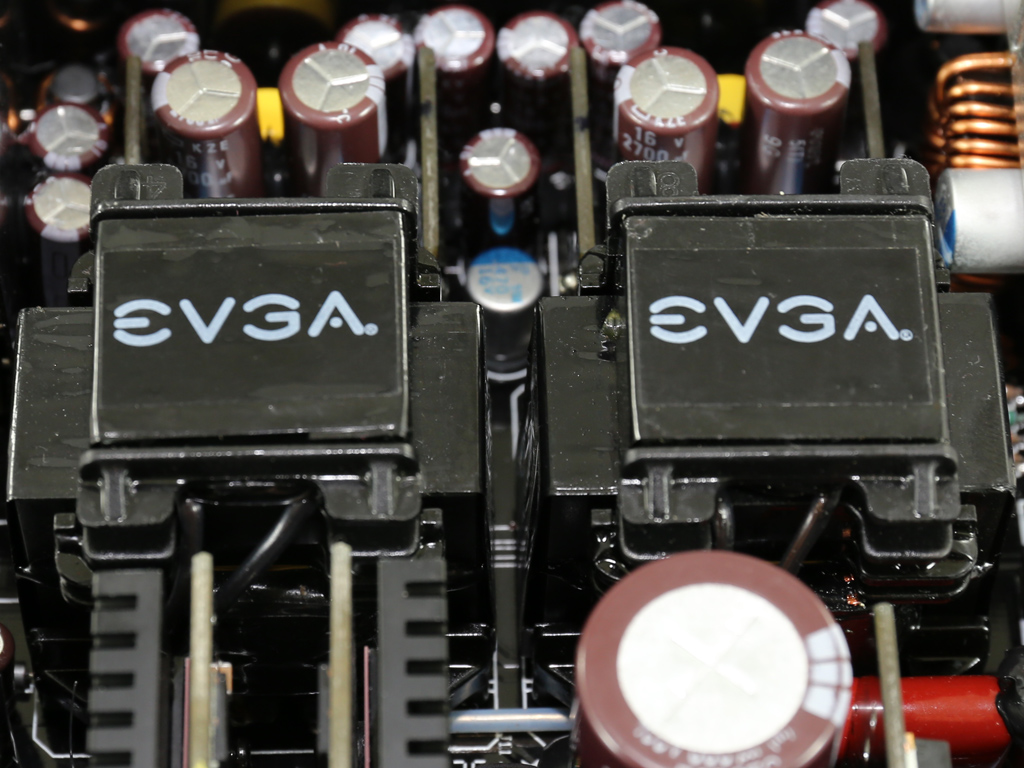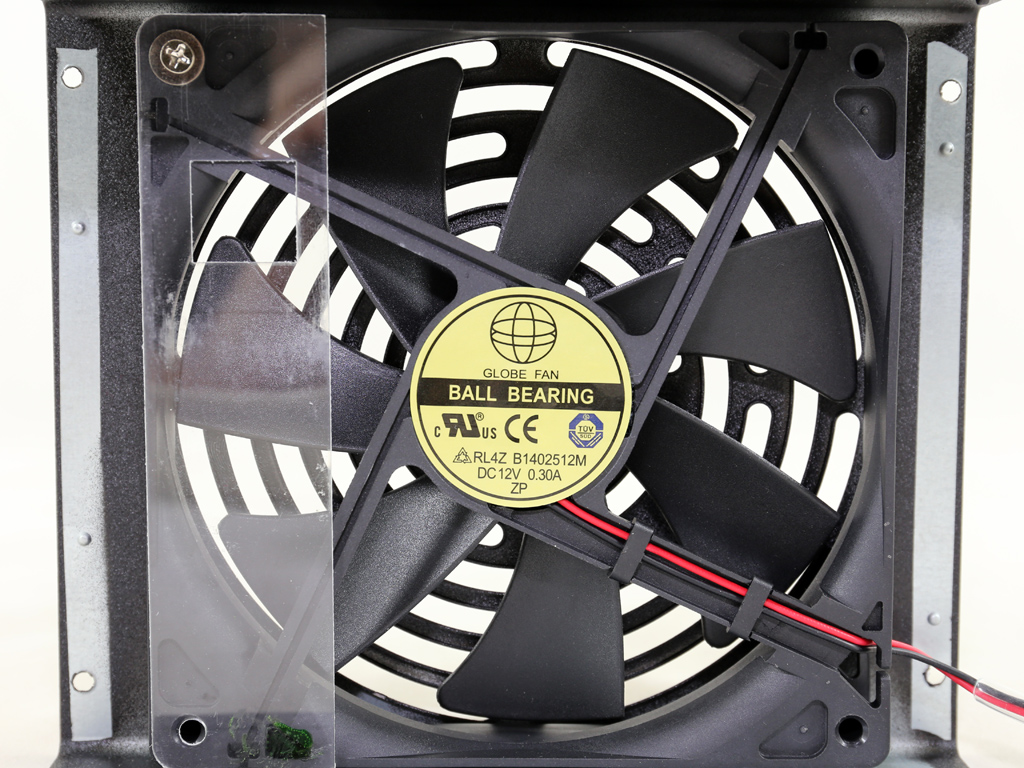EVGA SuperNOVA 850 T2 Power Supply Review
EVGA's T2 series consists of Titanium-rated PSUs with capacities ranging from 750 to 1600W. Today, we're looking at the 850W model, which tries to prove it is worth a premium compared to the company's Platinum-rated 850W offering.
Why you can trust Tom's Hardware
A Look Inside And Component Analysis
Parts Description
Before proceeding with this page, we strongly encourage you to a look at our PSUs 101 article, which provides valuable information about PSUs and their operation, allowing you to better understand the components we're about to discuss. Our main tools for disassembling PSUs are a Thermaltronics soldering and rework station, and a Hakko 808 desoldering gun.
| Primary Side | |
|---|---|
| Transient Filter | 4x Y caps, 2x X caps, 2x CM chokes, 1x MOV |
| Inrush Protection | NTC Thermistor & Relay |
| Bridge Rectifier(s) | Bridgeless Design - 1x US30K80R & 8x Infineon MOSFETs |
| APFC MOSFETs | 4x FETs |
| APFC Boost Diode | 4x Infineon IDH04G65C5 (650V, 4A @ 150°C) |
| Hold-up Cap(s) | 3x Nippon Chemi-Con (400V, 390uF & 2x 330uF or 1050uF combined, 2000h @ 105 °C, KMW) |
| Main Switchers | 4x Infineon IPB50R140CP (550V, 15A @ 100 °C, 0.14 ohm) |
| APFC Controller | SF29603 |
| Switching Controller | SFAA9013 |
| Topology | Primary side: Bridgeless PFC & Full-Bridge LLC & Resonant Converter Secondary side: Synchronous Rectification & DC-DC converters |
| Secondary Side | |
| +12V MOSFETs | 8x Infineon BSC027N04LS G (40V, 88A @ 100 °C, 2.7 mohm) |
| 5V & 3.3V | DC-DC Converters: 8x Infineon IPD060N03 FETs PWM Controller: 2x NCP1587A |
| Filtering Capacitors | Electrolytics: Nippon Chemi-Con (105 °C, KY, KZE, KRG) Polymers: Nippon Chemi-Con |
| Supervisor IC | AA9013 & LM324ADG |
| Fan Model | Globe Fan RL4Z B1402512M (140mm, 12V, 0.3A, 1200 RPM, 92.16 CFM, 24.9 dB[A], DBB) |
| 5VSB Circuit | |
| Rectifier | 1x PFR40V60CT (60V, 20 x 2A) Schottky Rectifier Rectifier (SBR) |
| Standby PWM Controller | 29604 |
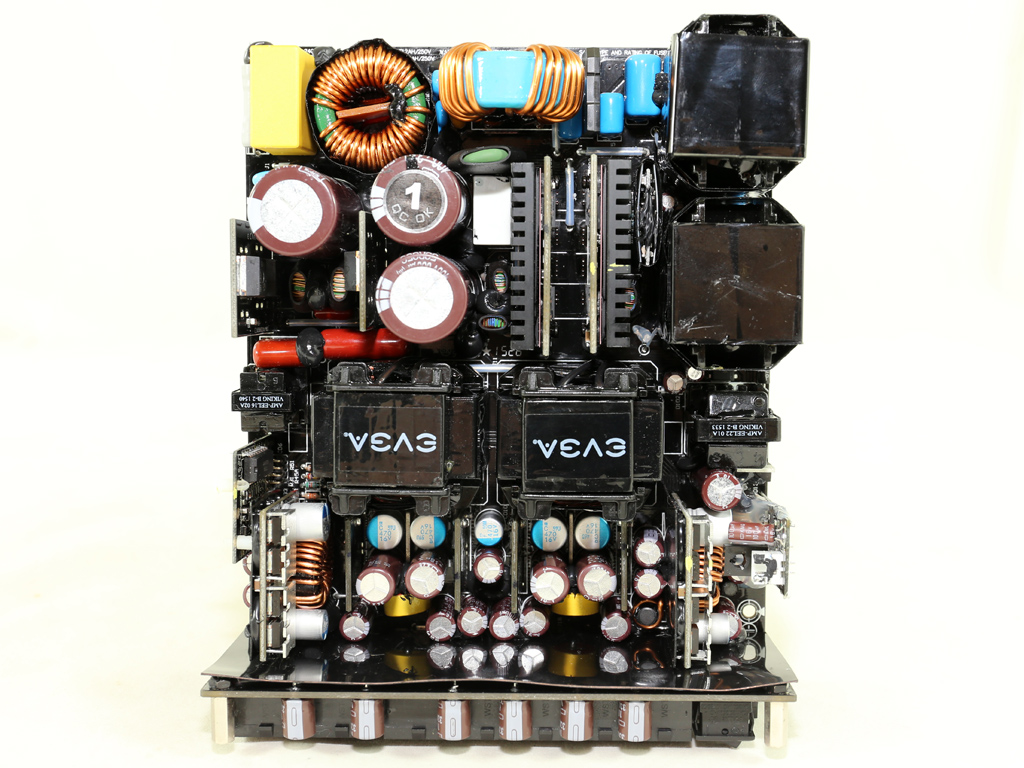
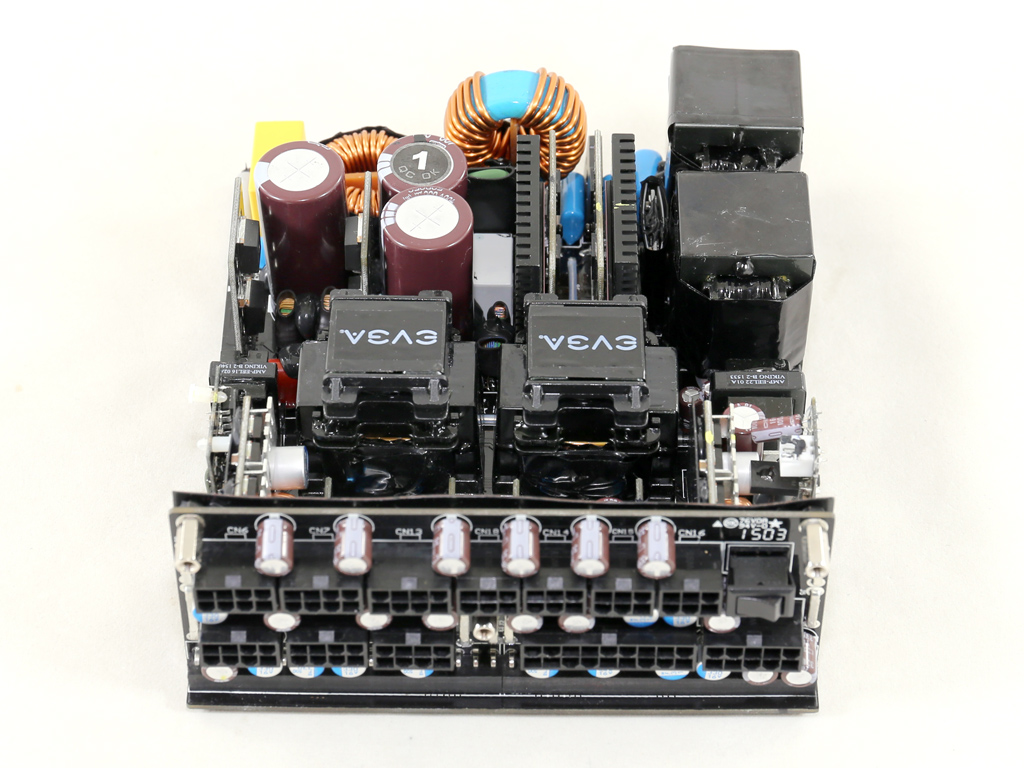

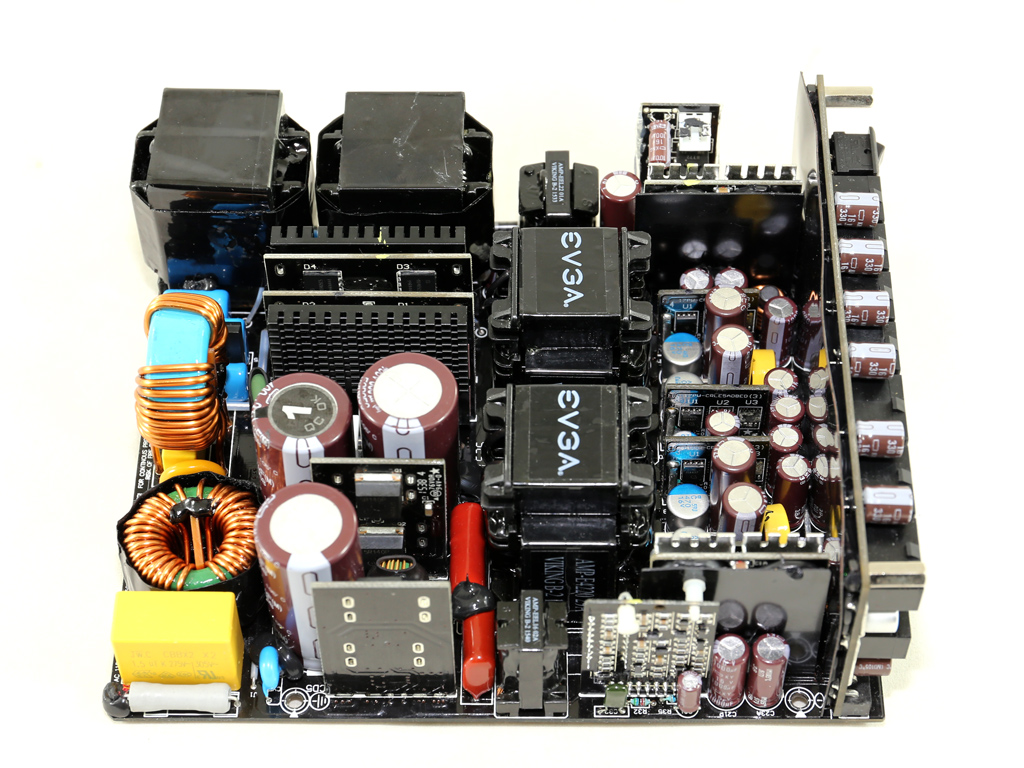
Once we broke apart the PSU, we instantly saw why it's so much more expensive than the similar-capacity P2 model. This unit uses a different platform entirely that shares many similarities with the flagship 1600 T2. The Titanium-rated Super Flower Leadex platform is based on a cutting-edge design in order to achieve the highest possible efficiency levels. In the primary side, a bridge-less implementation is used, and the only bridge rectifier installed on the PSU's PCB handles the standby rail's (5VSB) needs. In a bridge-less design, rectification of the AC signal is done by FETs and not by bridge rectifiers, which include diodes where voltage drops occur, leading to significant energy losses. So, in the 850 T2, the APFC converter has a dual role. It rectifies the incoming AC signal and also shapes the current waveform in order to make it proportional to the mains voltage waveform. This brings the power factor closer to unity, less power returns back to the mains grid (apparent power) and more power is forwarded to the load (real power). That ratio of real power to apparent power (kW/kVA) is what defines the power factor.
A synchronous design is used on the 850 T2's secondary side, so a number of FETs regulate the +12V rail while two DC-DC converters generate the minor rails. The quality of EVGA's components is high, and this surely affects the PSU's high production cost. Finally, Super Flower uses very few and quite small heat sinks since energy dissipation is greatly reduced, minimizing thermal loads.
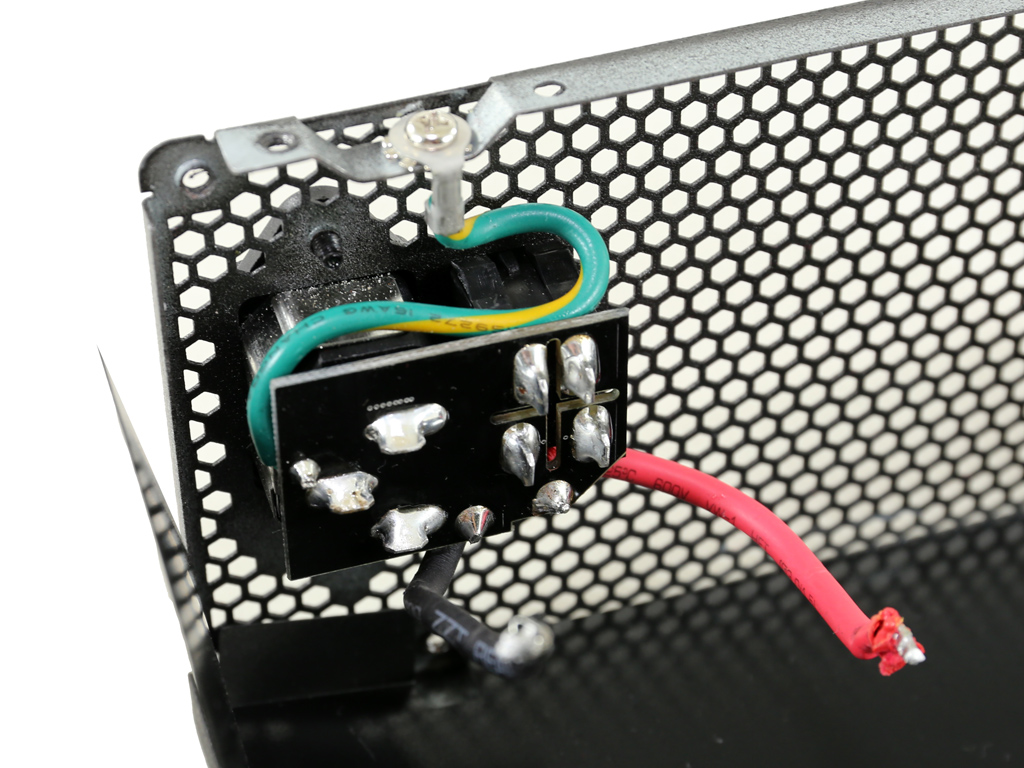

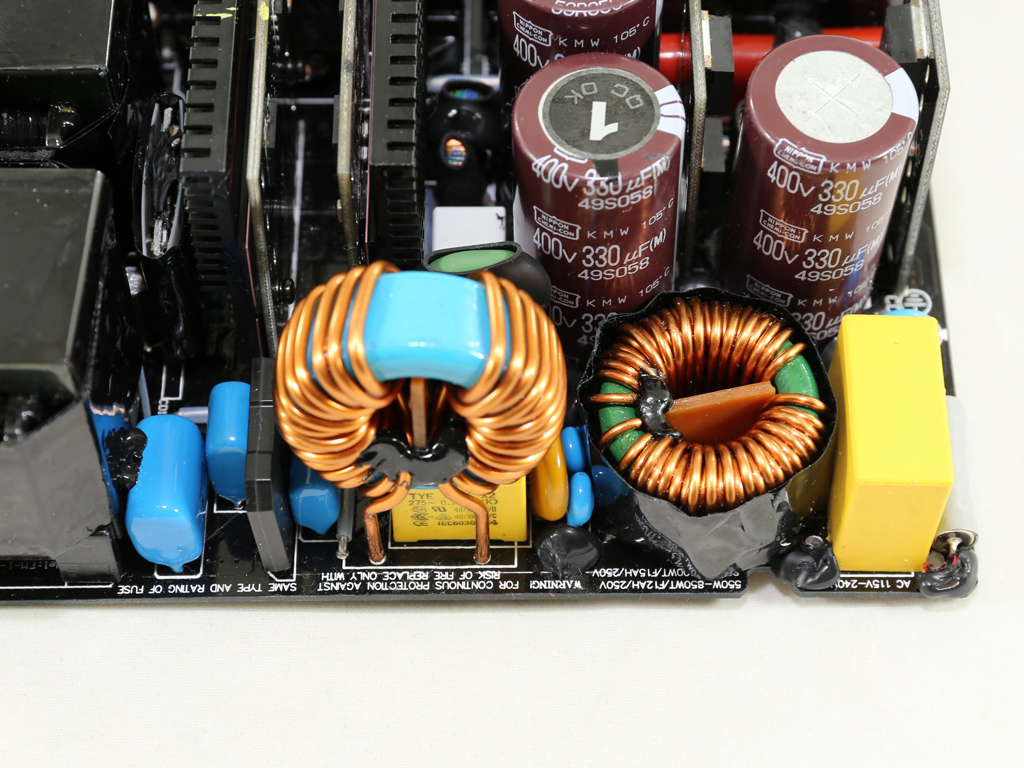
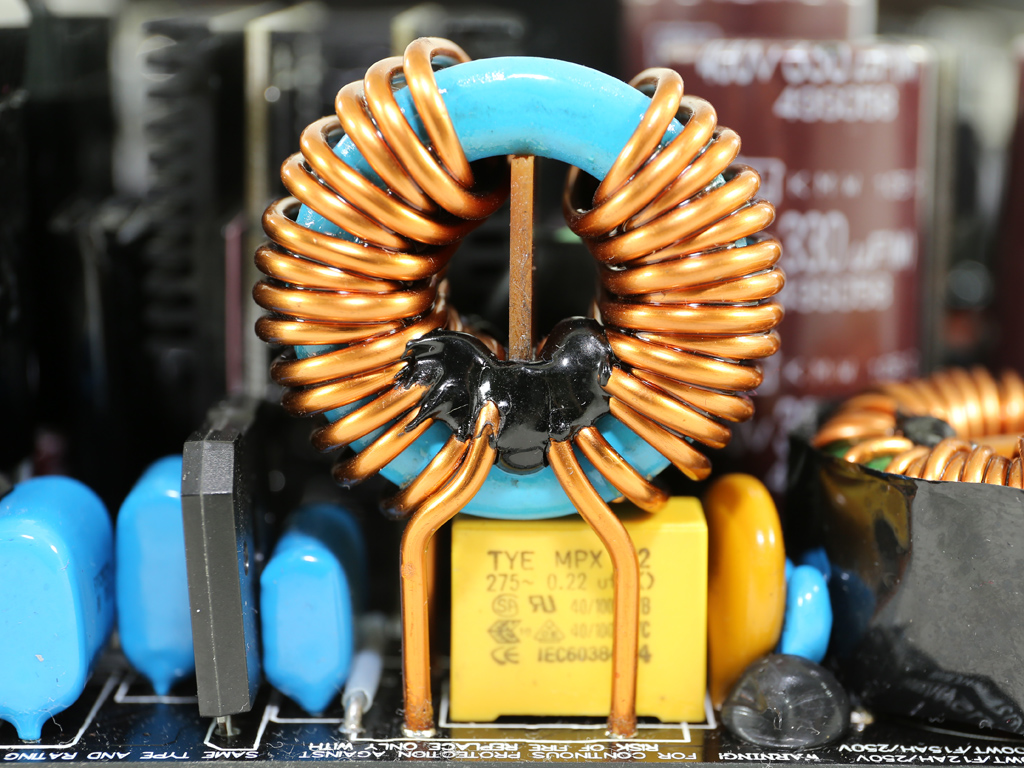
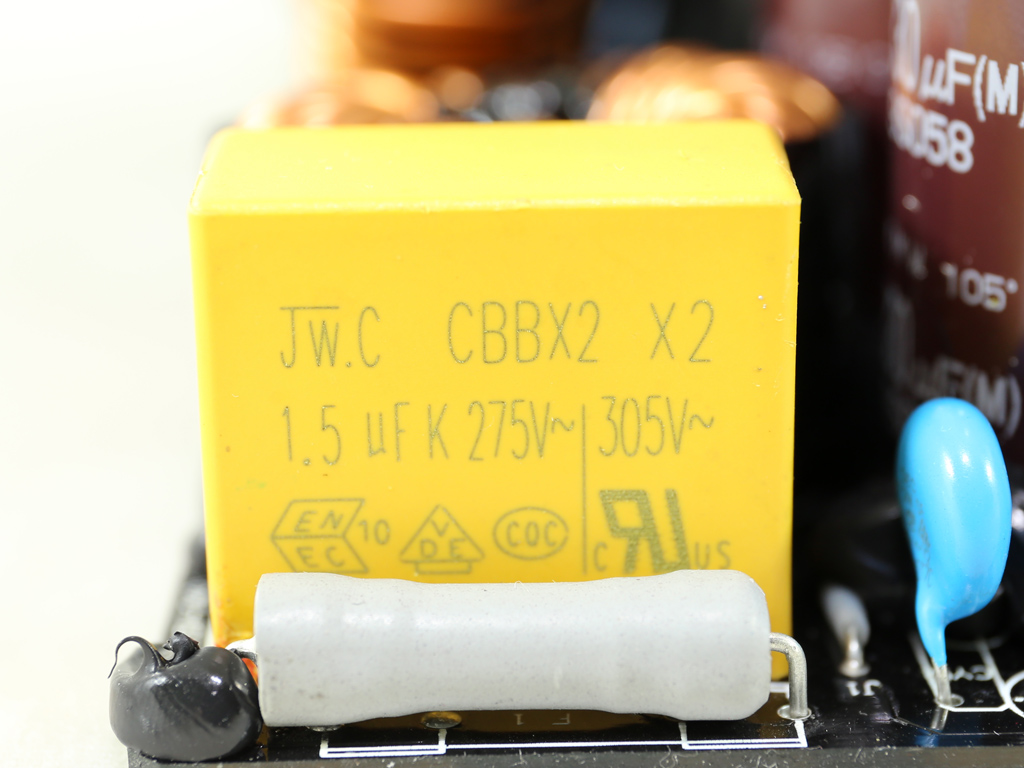
The small PCB right behind the AC receptacle doesn't hold any EMI filtering components. Those are all on the main PCB, and include four Y and two X caps, two CM chokes and an MOV.
There is an NTC thermistor and a bypass relay for protecting against large inrush currents.

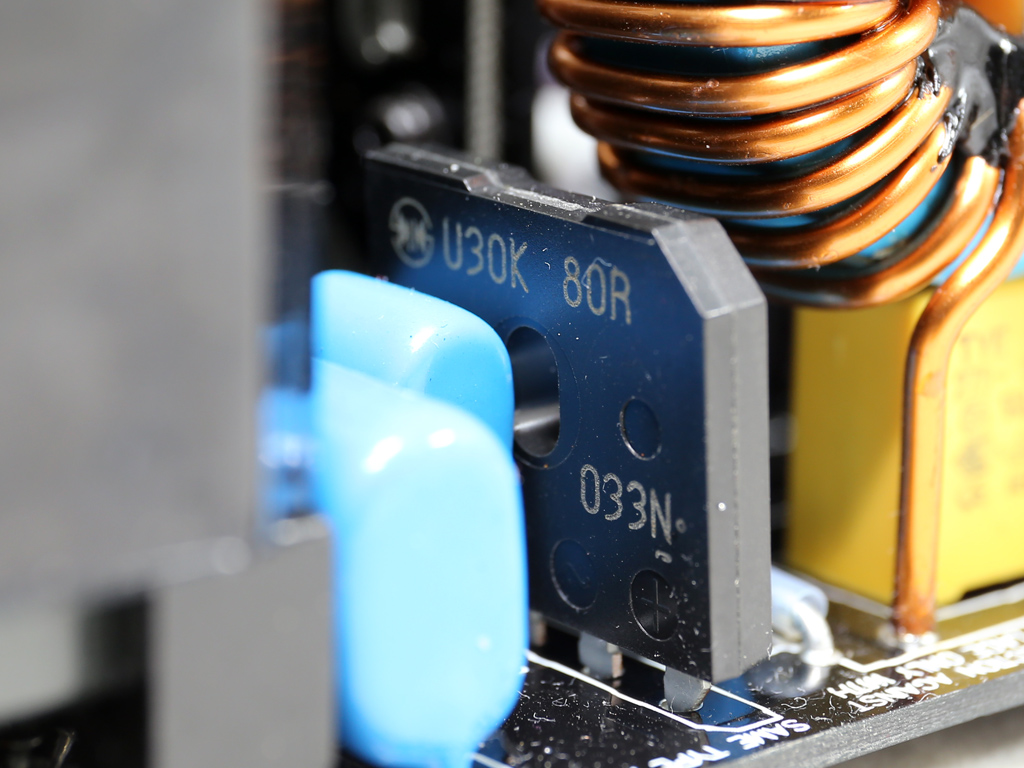
The single bridge rectifier, a US30K80R, is used only by the 5VSB circuit. Again, the main rectification takes place in the APFC converter.
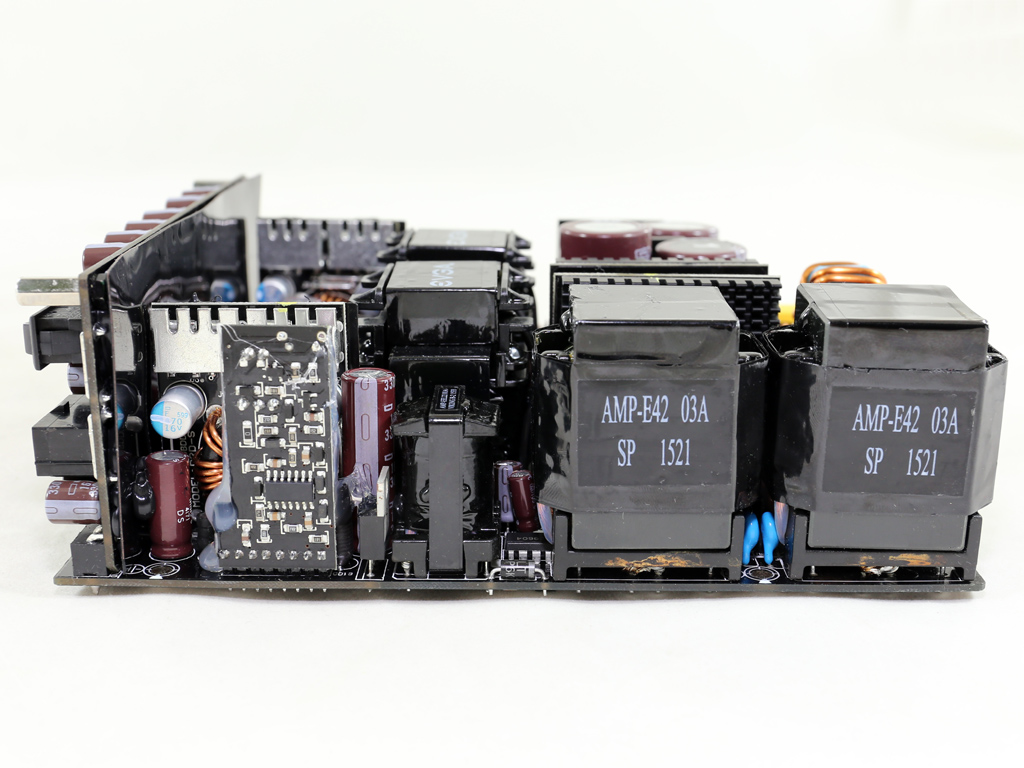

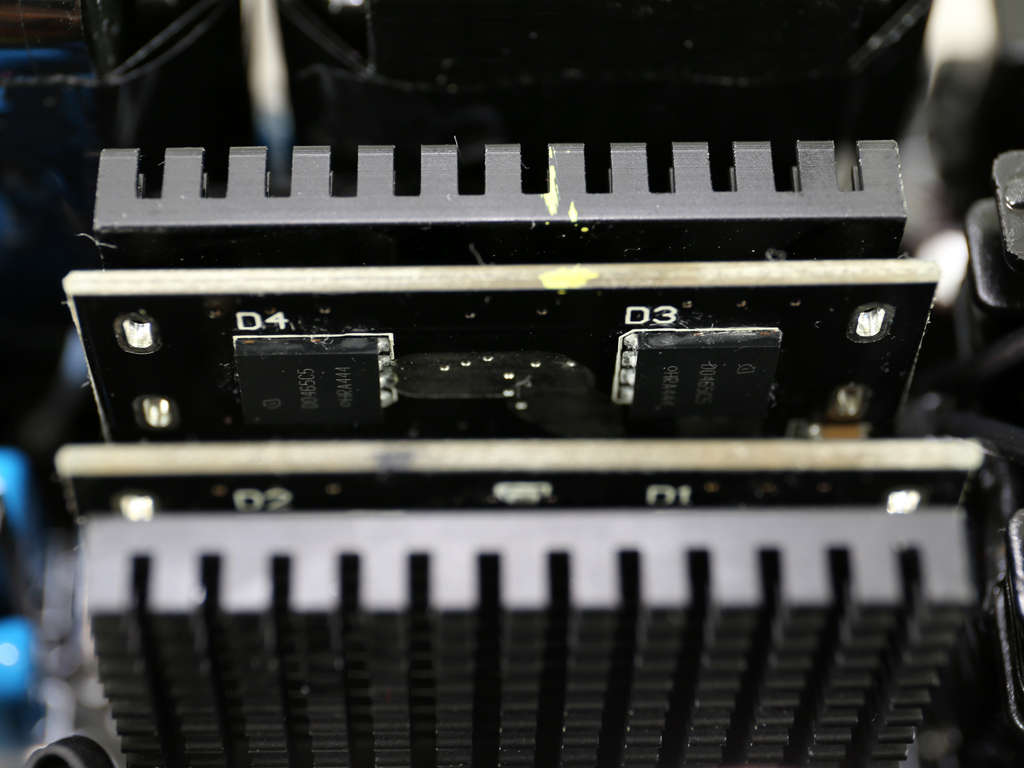
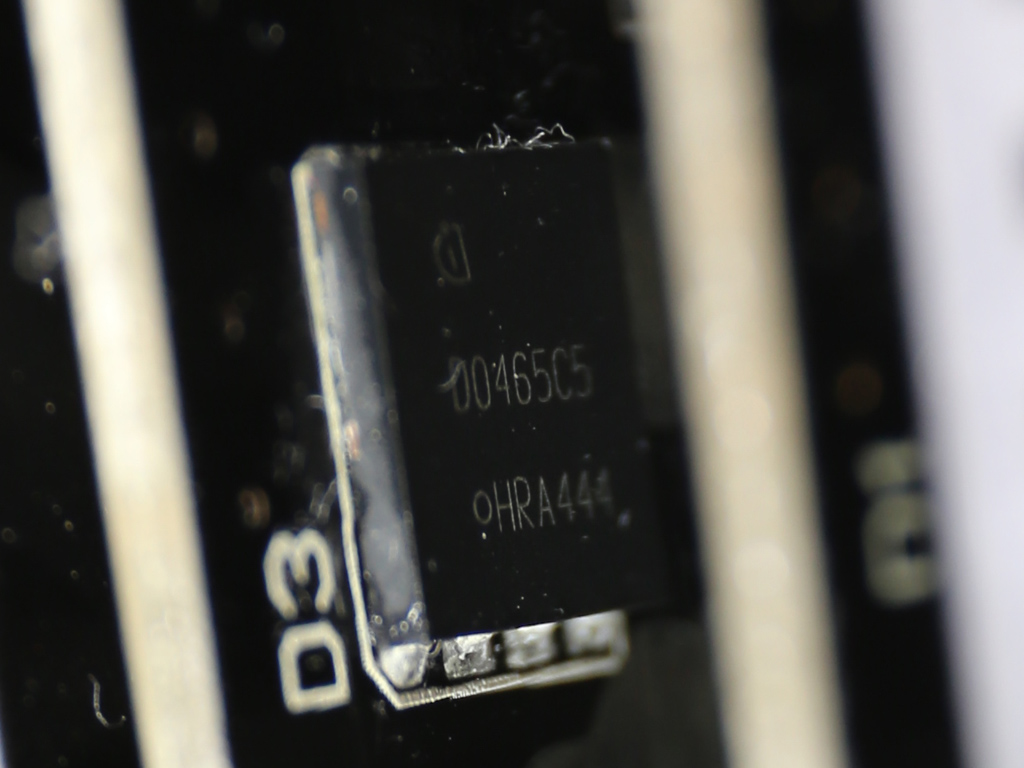
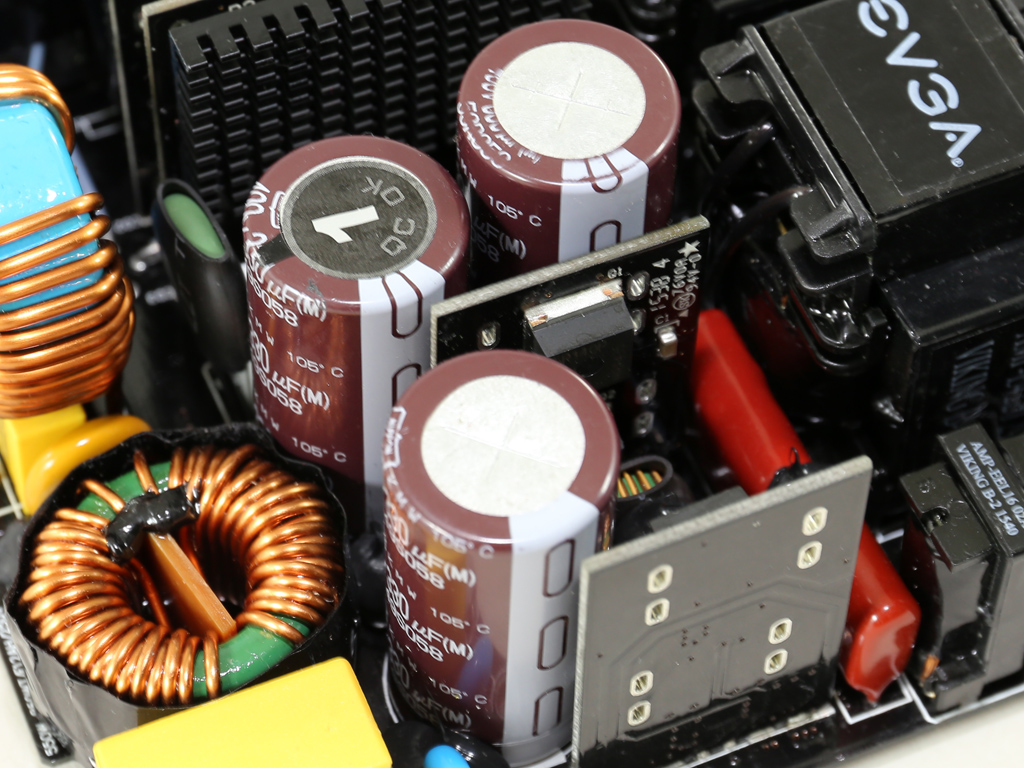

Four FETs in the APFC converter, which we couldn't identify without destroying the PSU, rectify the incoming AC voltage and, along with four
Infineon IDH04G65C5 boost diodes, chop the fully rectified DC output into short pulses that are further smoothed by the bulk caps. Those caps include three Nippon Chemi-Cons rated at 105 °C with 1050uF combined capacity. That's high enough to facilitate a hold-up time much longer than 17ms.
Get Tom's Hardware's best news and in-depth reviews, straight to your inbox.
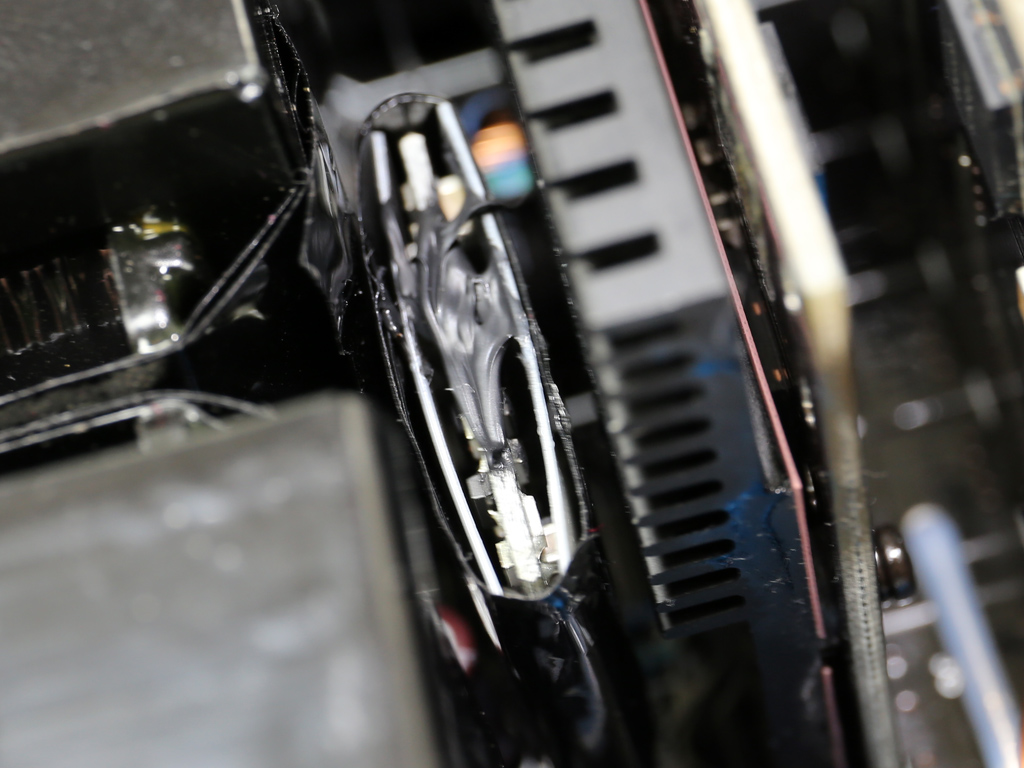
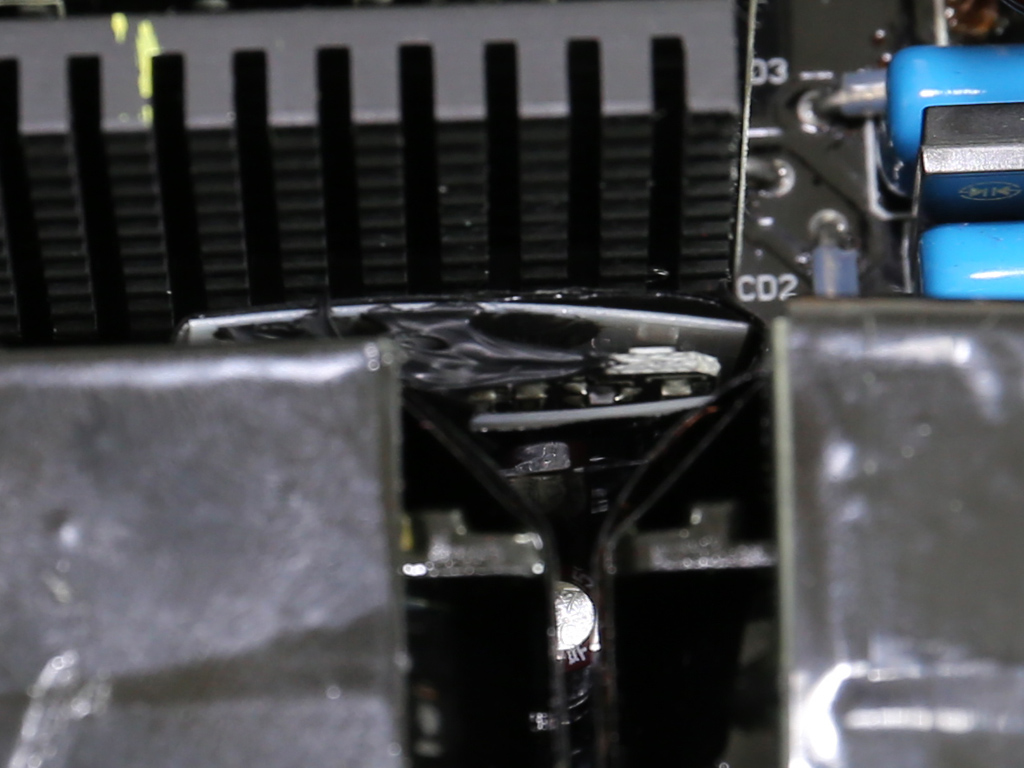
The PFC controller is a proprietary IC with model number SF29603. It is installed on a PCB covered by black tape.
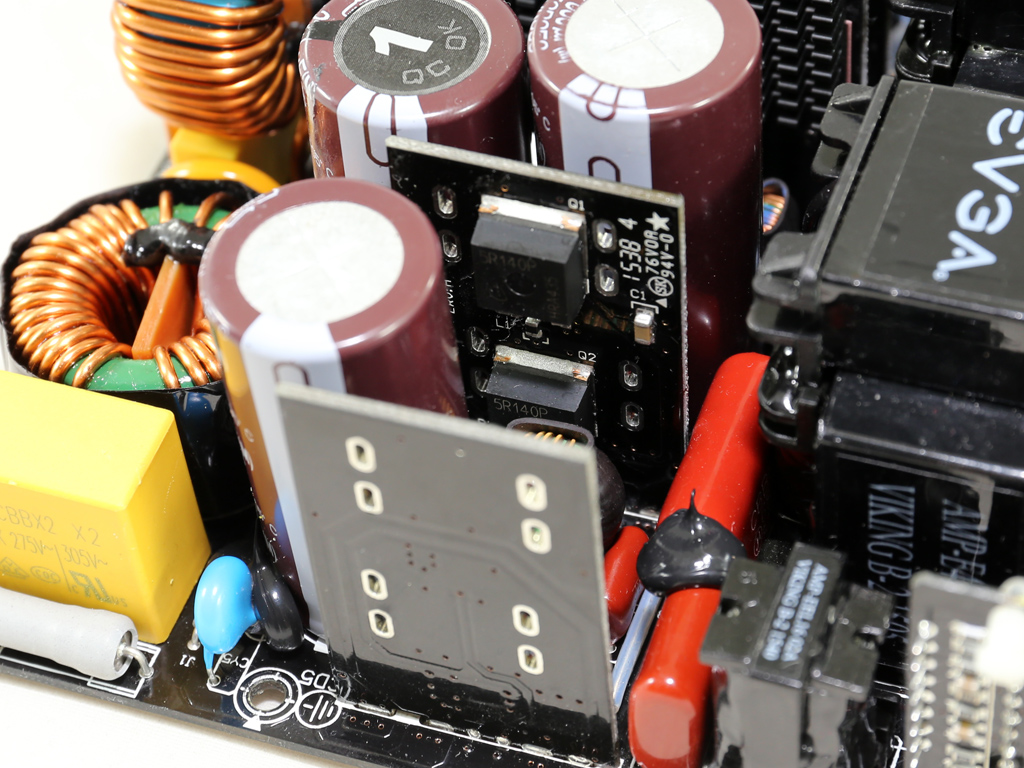
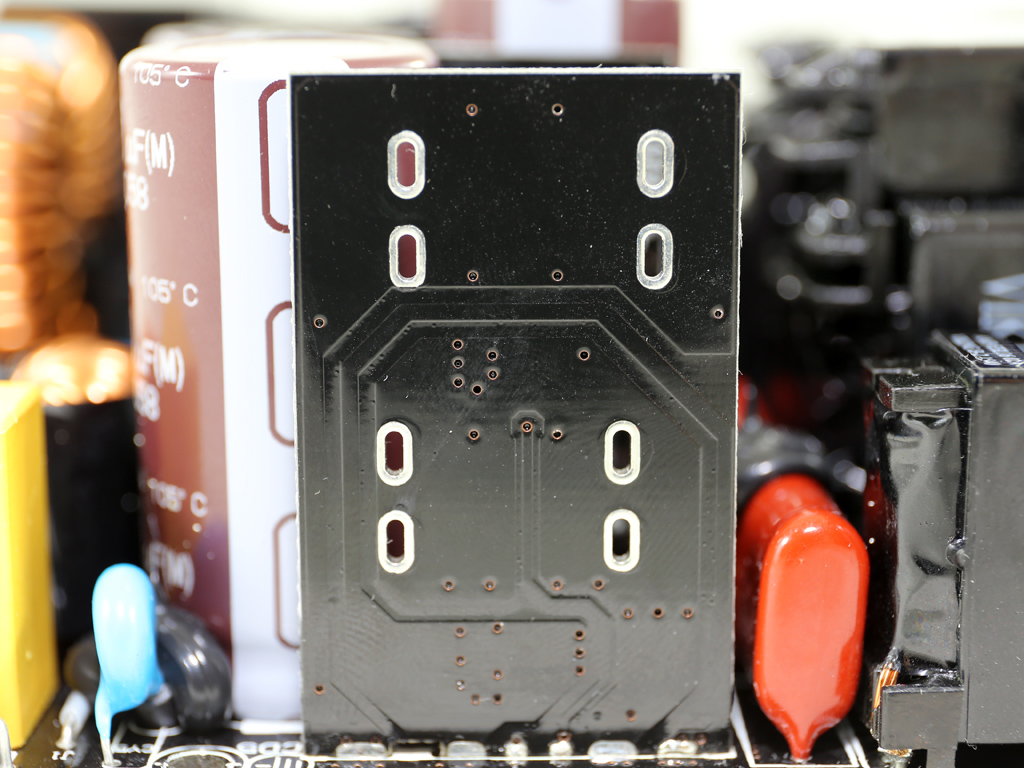
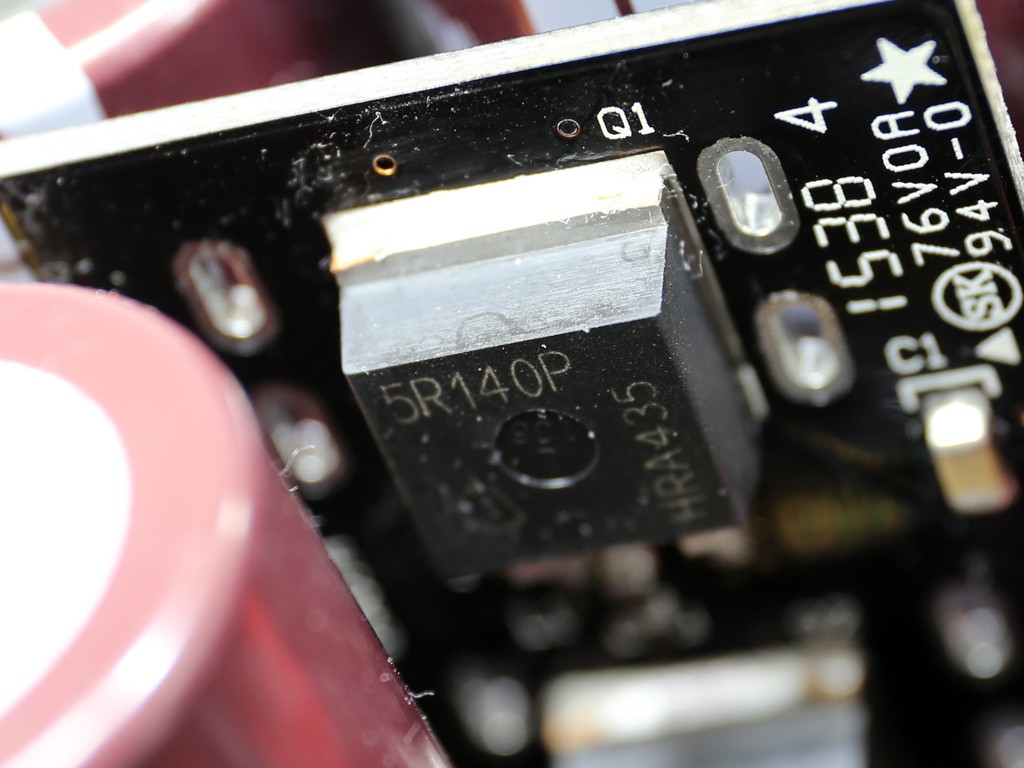
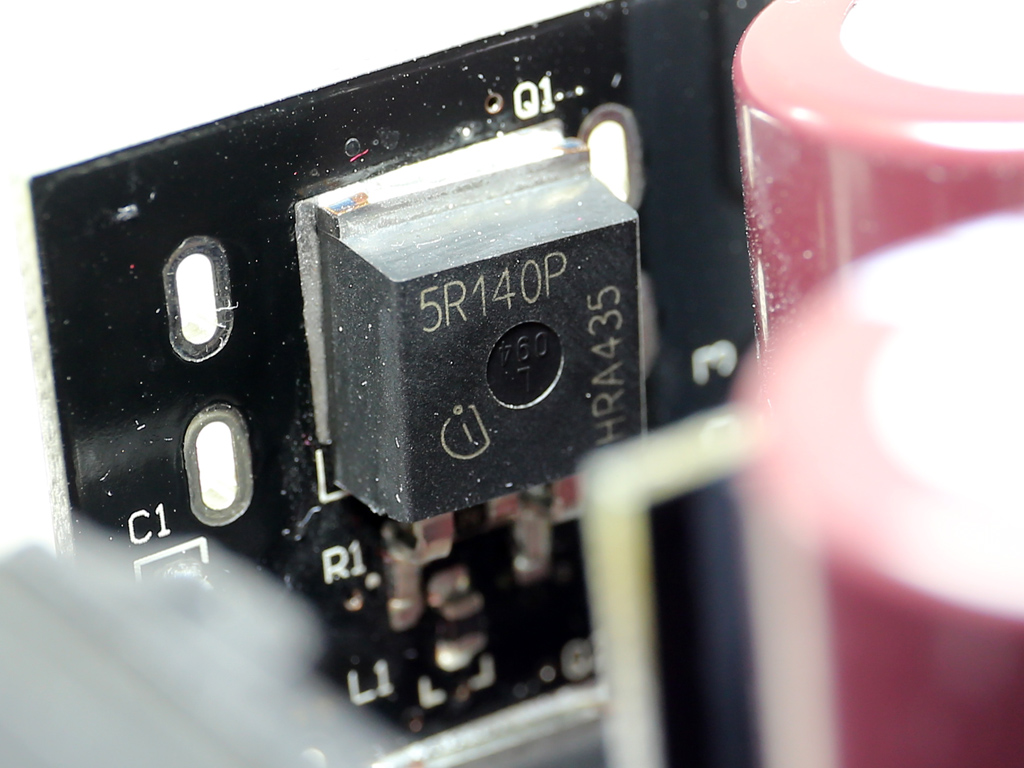
Two vertical boards hold the main switchers, four Infineon IPB50R140CP FETs arranged into a full-bridge topology (often considered the best for low energy losses at high loads). An LLC resonant is also used to increase efficiency.
Instead of a large main transformer, two smaller ones in parallel are used.
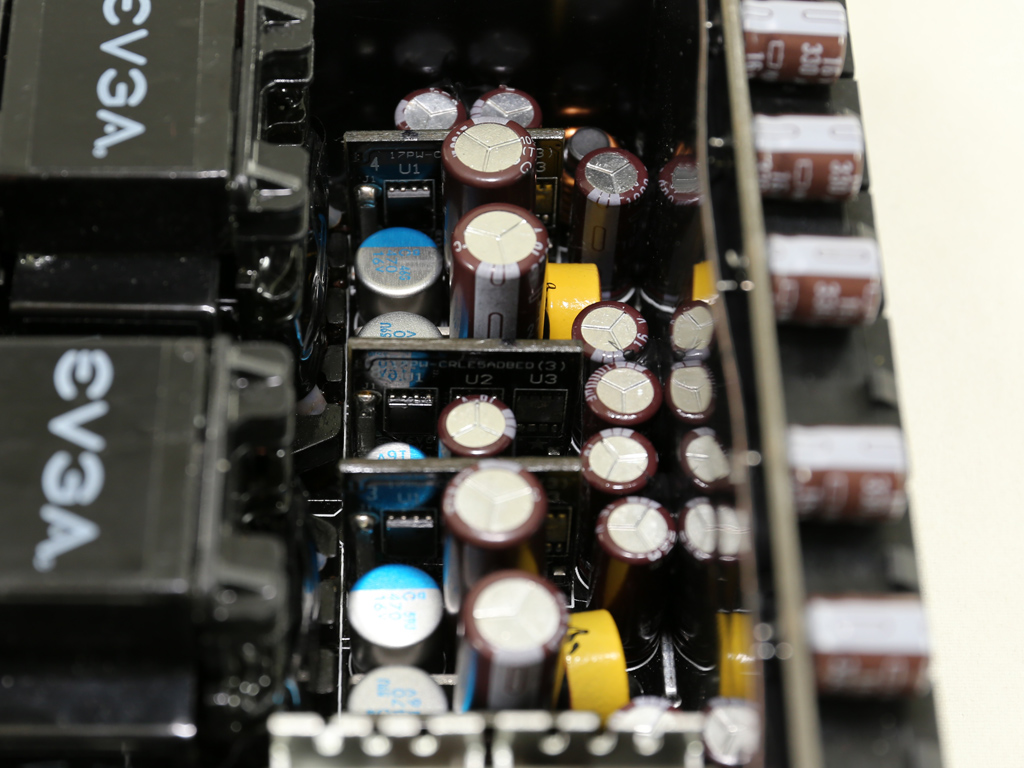
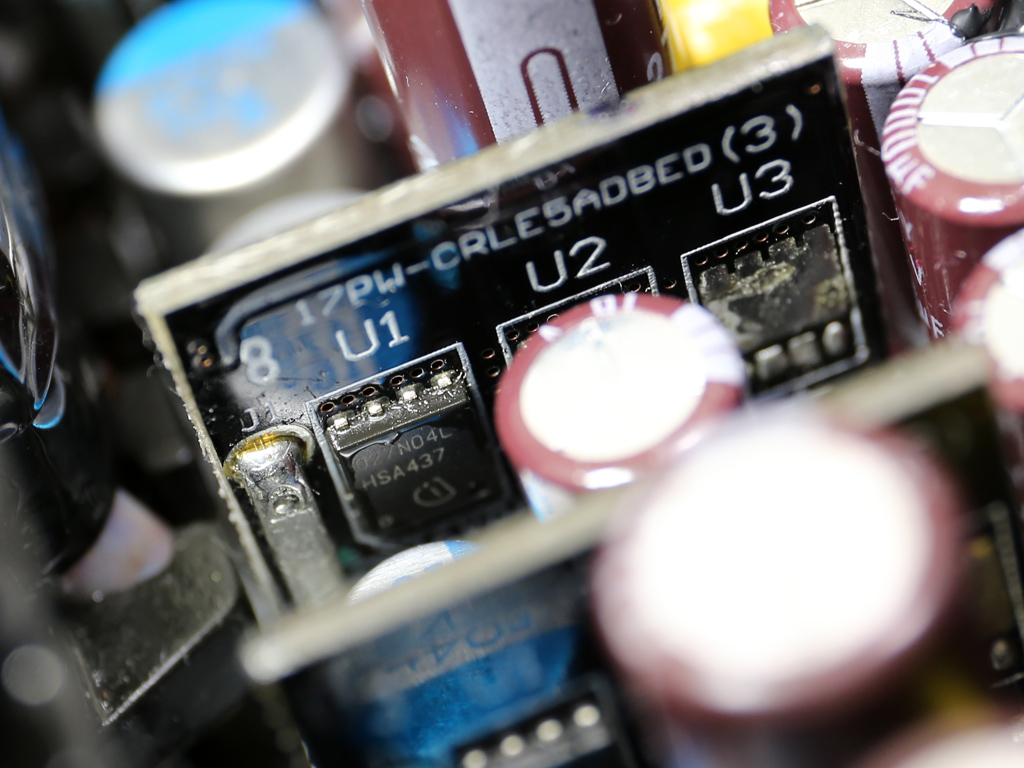
Four small daughterboards host two Infineon BSC027N04LS G FETs each, which are used for regulating the +12V rail. In total, eight FETs handle this rail, and not even a single heat sink is used to cool them since each FET only has a small load to deal with.
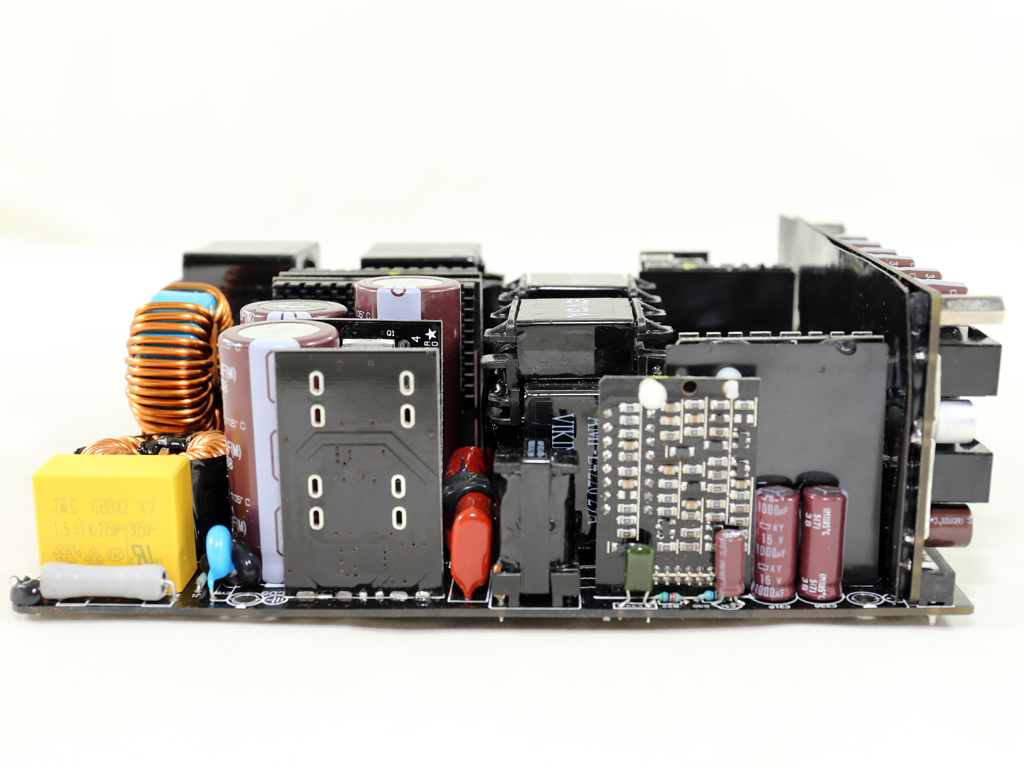
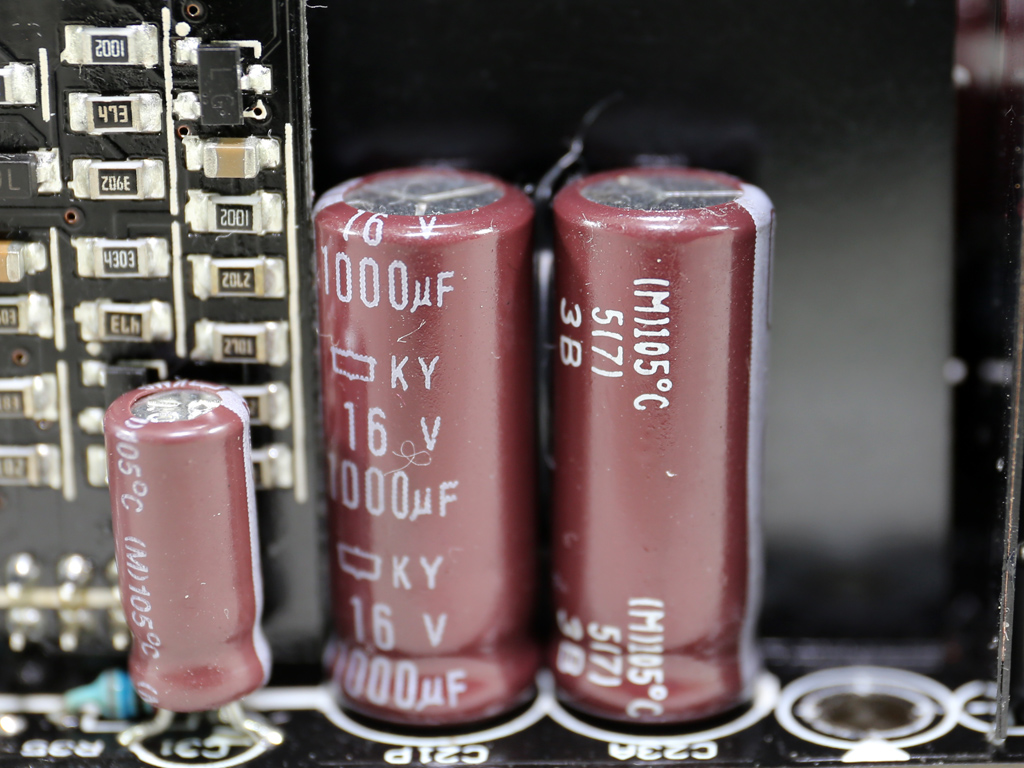


All filtering caps on the secondary side, both polymer and electrolytic, are provided by Nippon Chemi-Con. On the main PCB, the electrolytic caps belong to the KZE and KY families and are rated at 105 °C.

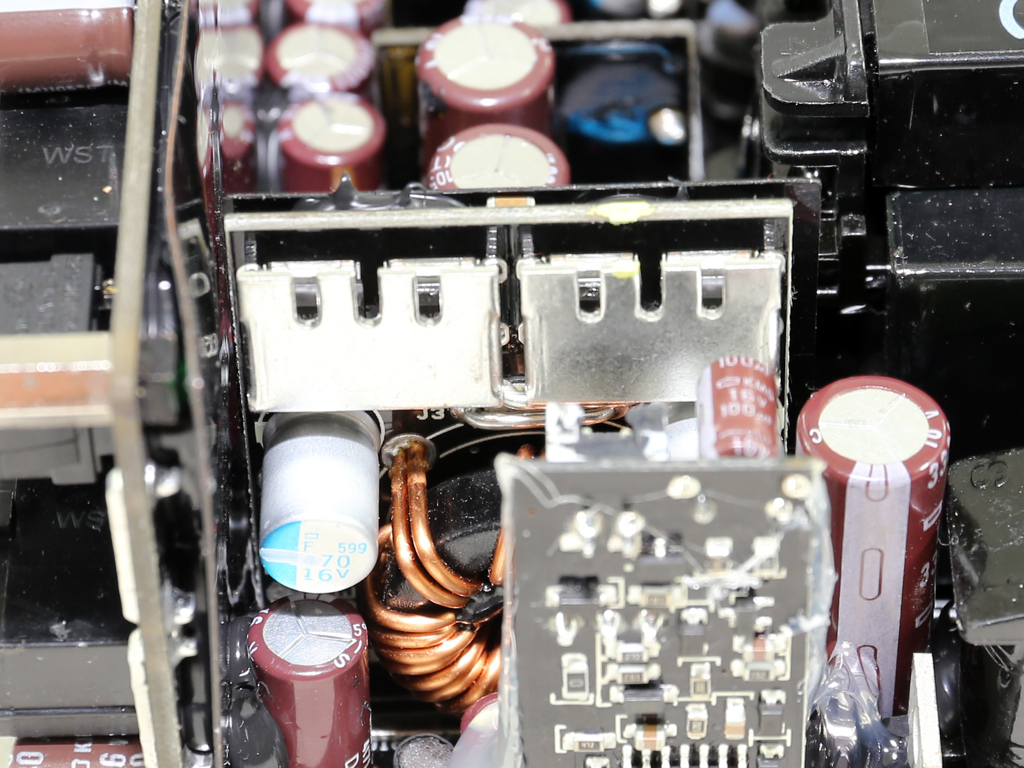
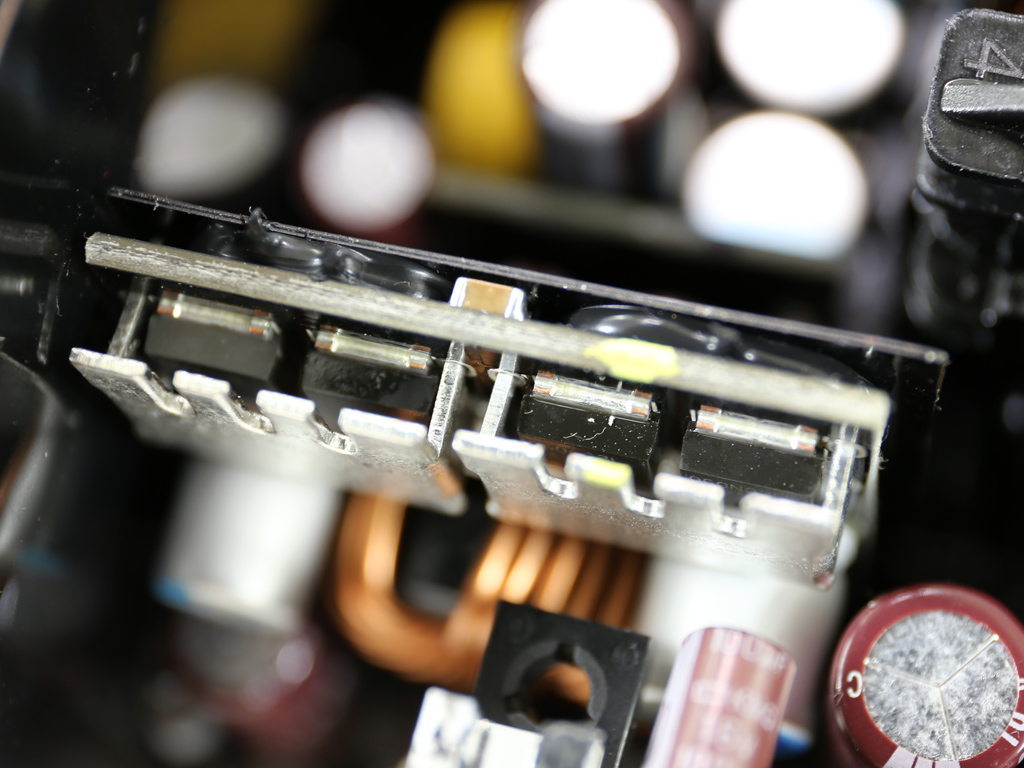

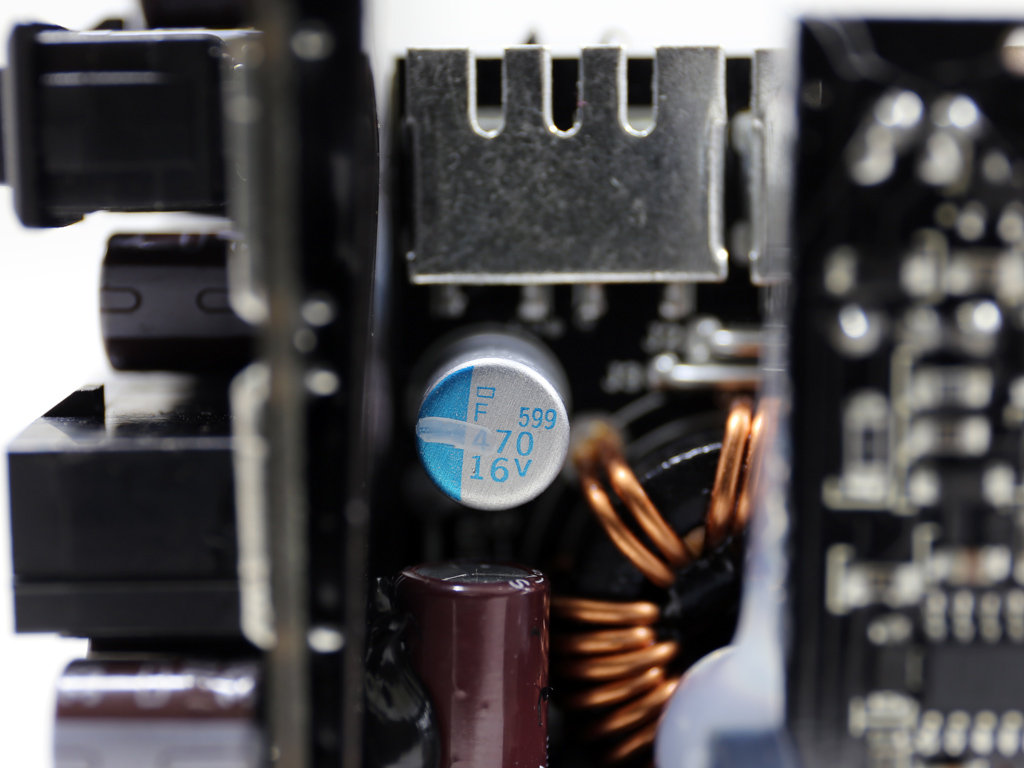
Two small boards hold the DC-DC converters that regulate the minor rails. Each converter consists of four Infineon IPD060N03 FETs and a single NCP1587A PWM controller. In addition, metallic shields protect the FETs against EMI noise.
The photo above shows the fan control circuit, which includes an LM324ADG. Since the PCB is held in place only by the solder joints on its base, it is very fragile.
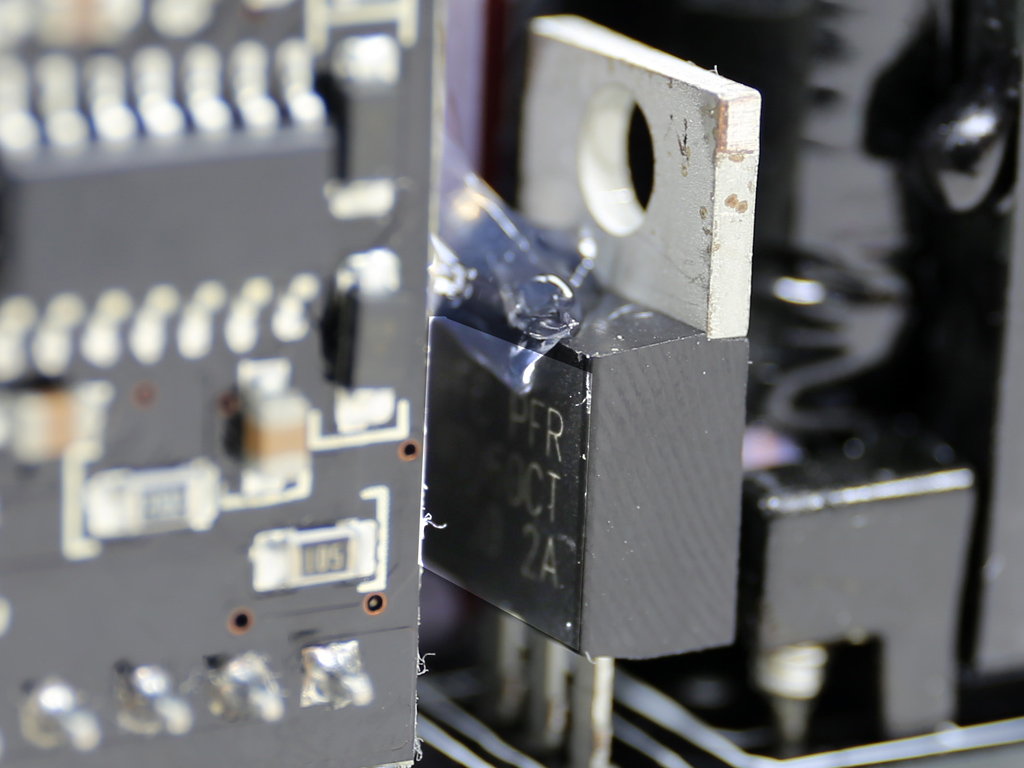
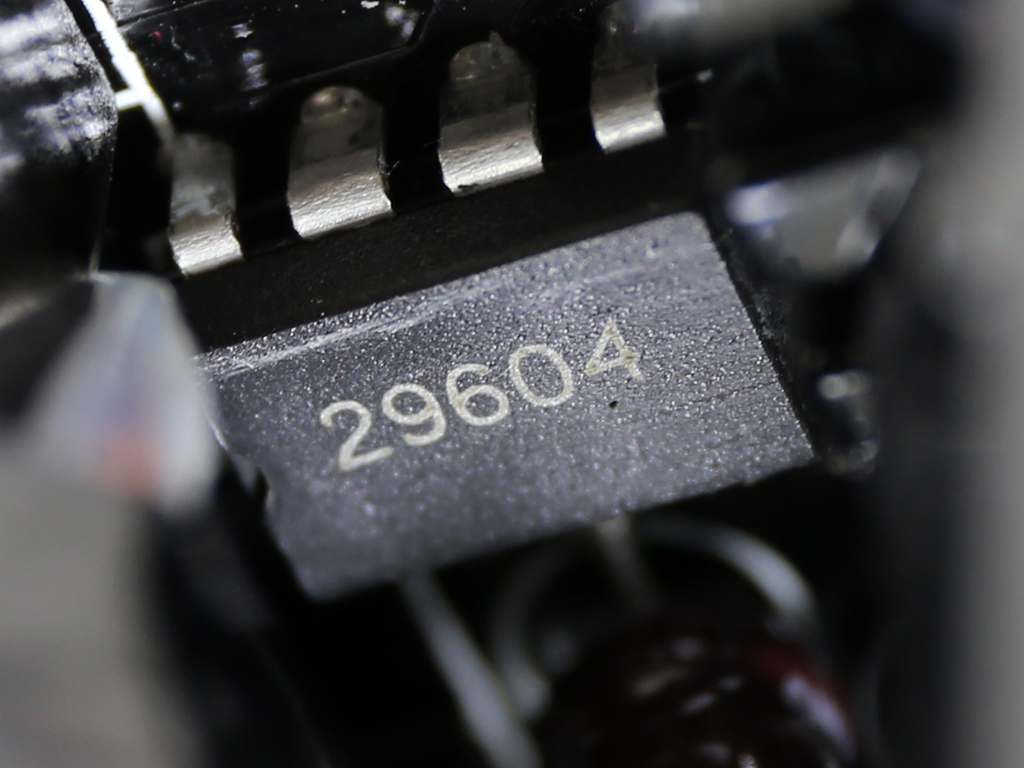
Instead of the usual Mospec S10C60C SBR that most EVGA and SF models use, we find a PFR40V60CT that's used to generate the 5VSB rail. The standby PWM controller is an IC with the number 29604 written on it. The same IC is used by all high-end Super Flower models.
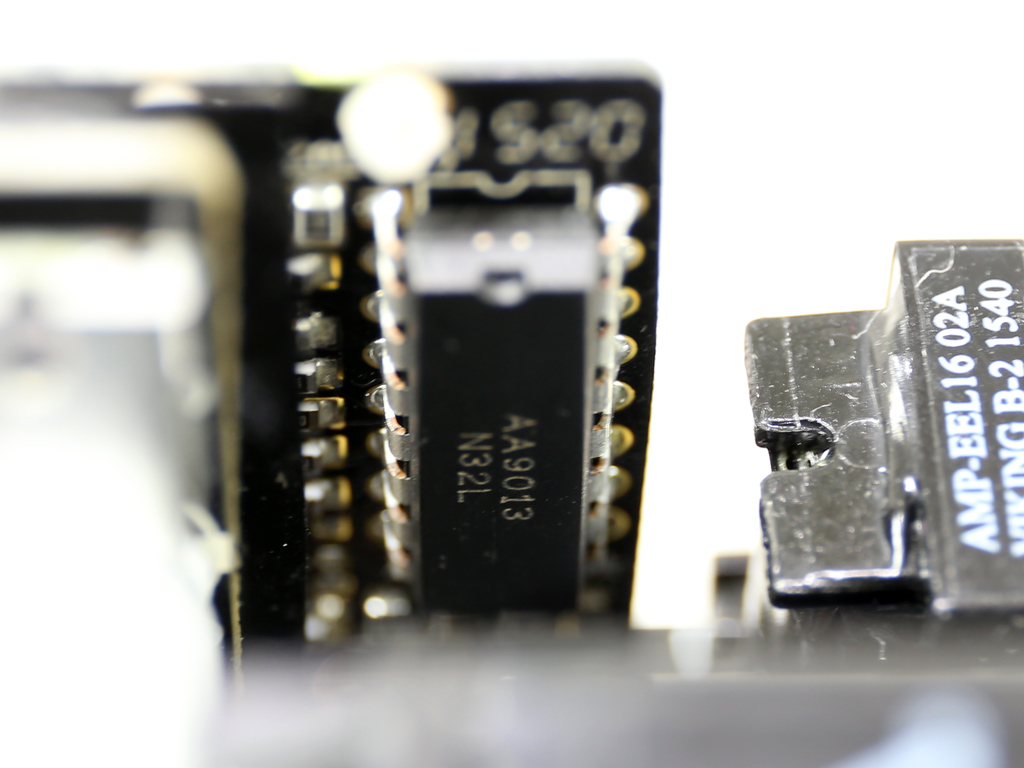

The resonant controller is an AA9013 IC, which is installed on a vertical board. There is also an LM324ADG operational amplifier on the same board.
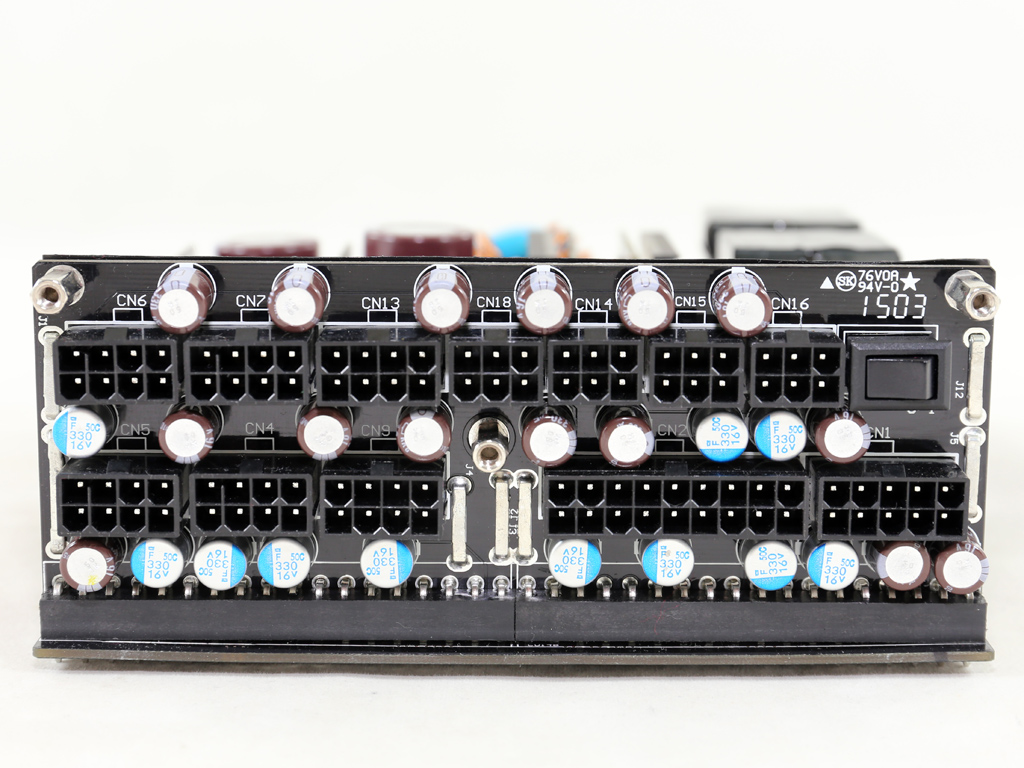
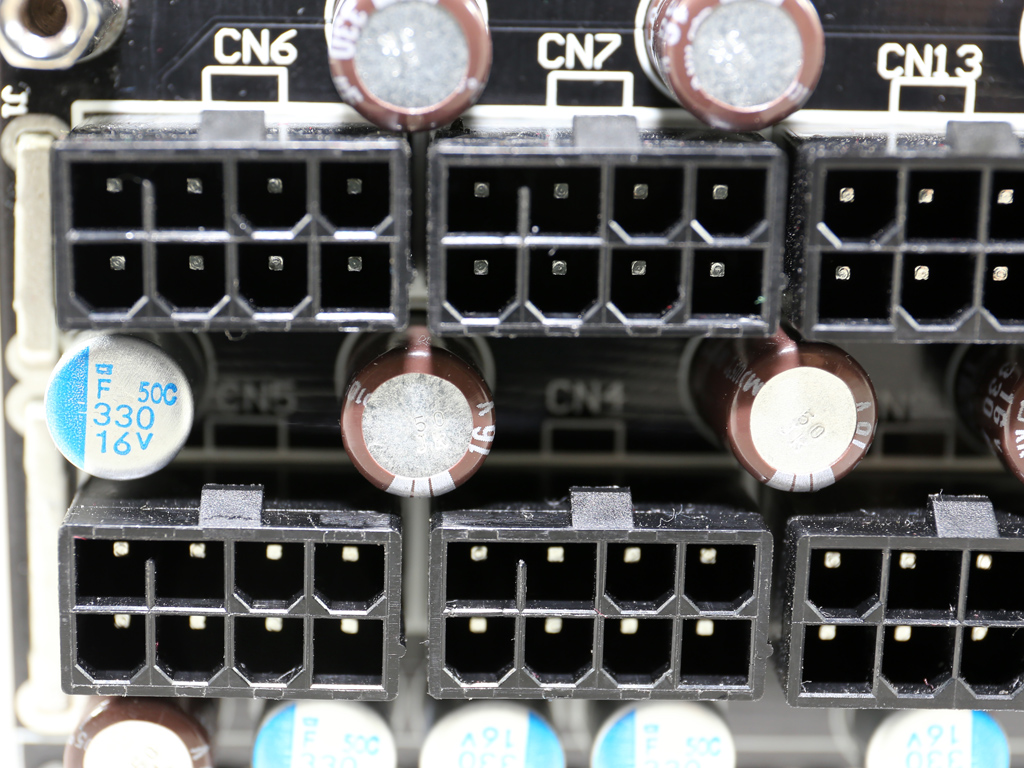


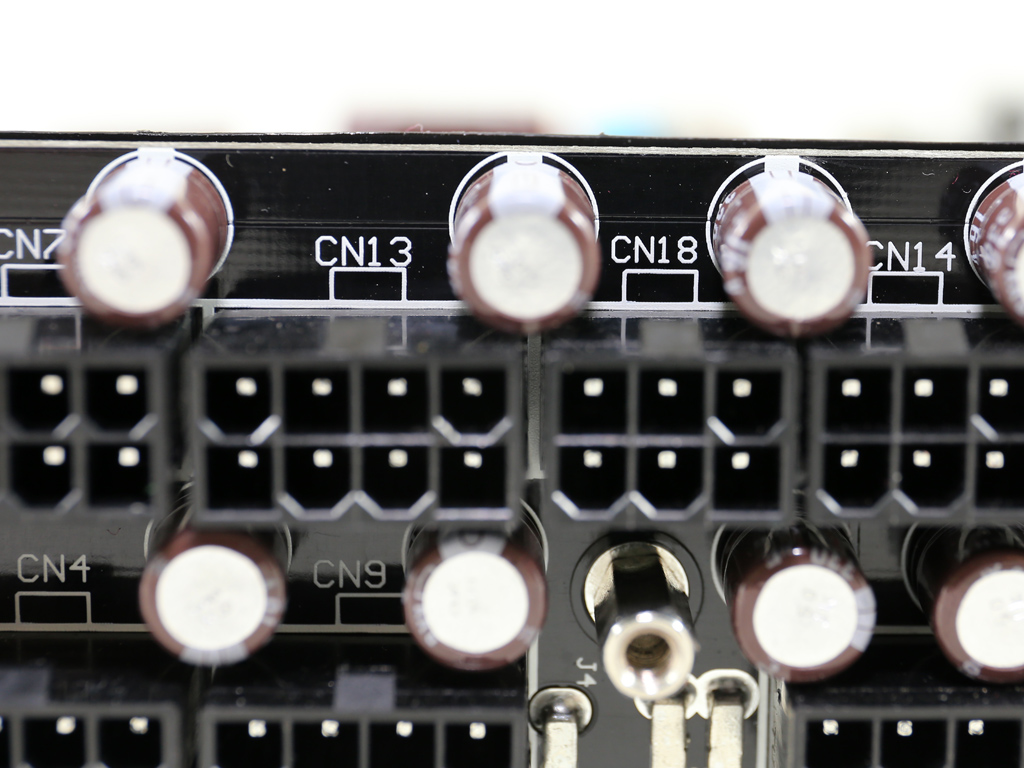


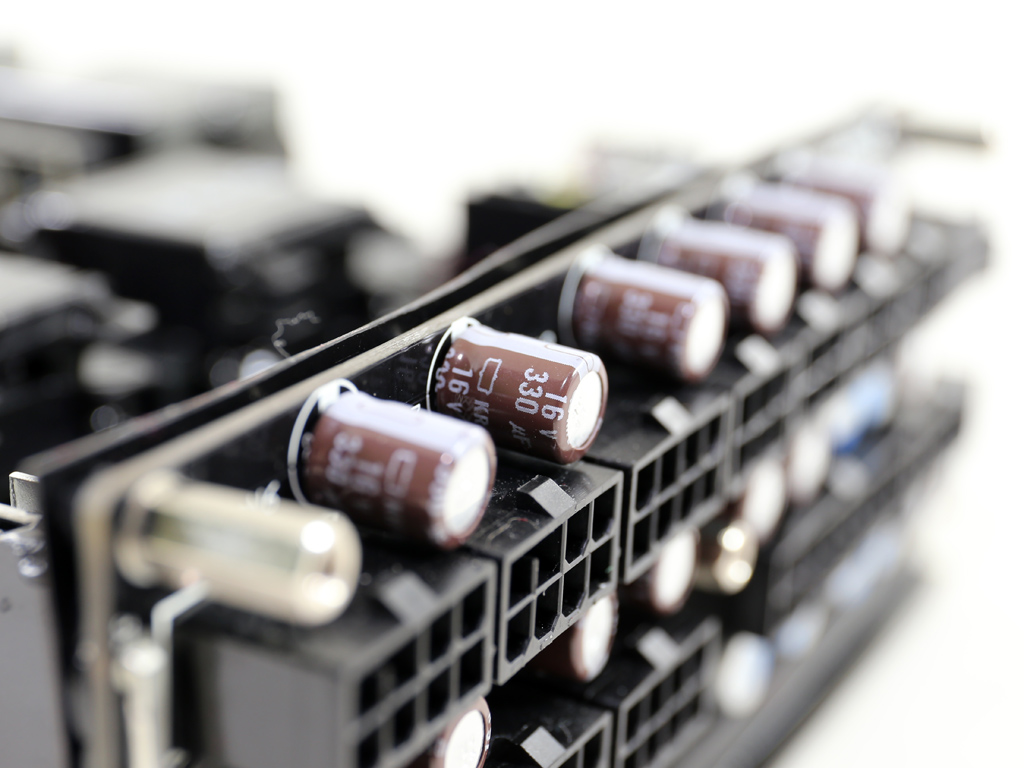
Many polymer and electrolytic caps by Chemi-Con are installed on the front side of the modular PCB for ripple filtering. The electrolytic caps belong to the KRG line, which only has 1000h lifetime. Although that doesn't sound good, the caps in this area take low stress since most filtering happens on the main PCB through higher-quality caps.
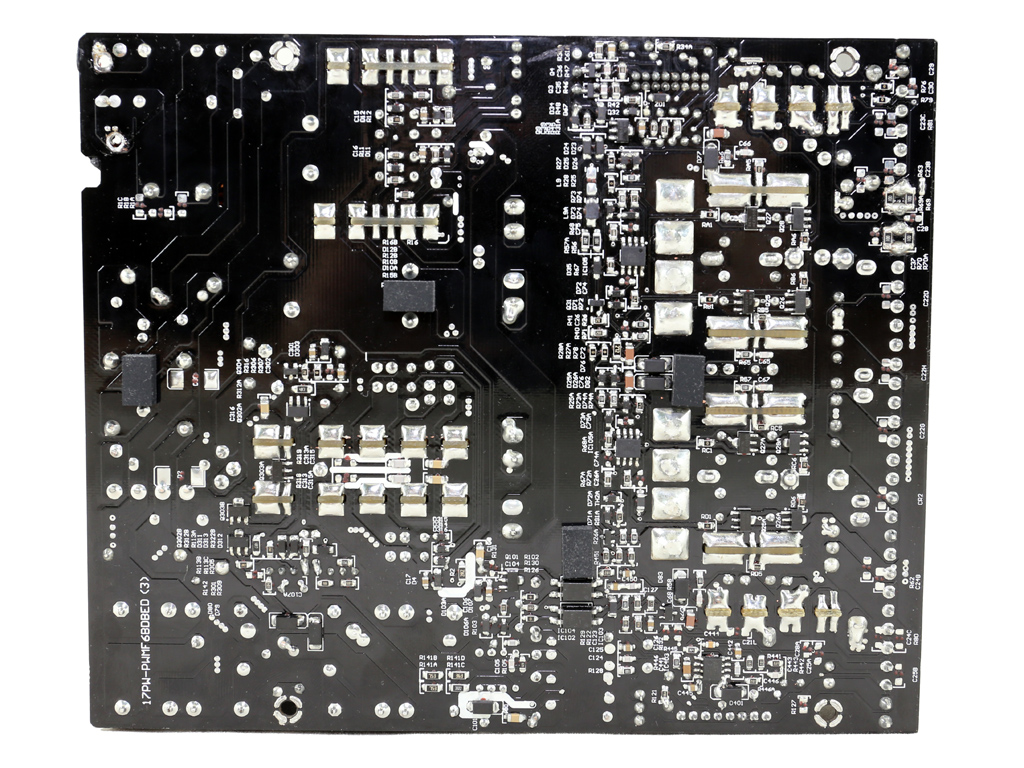


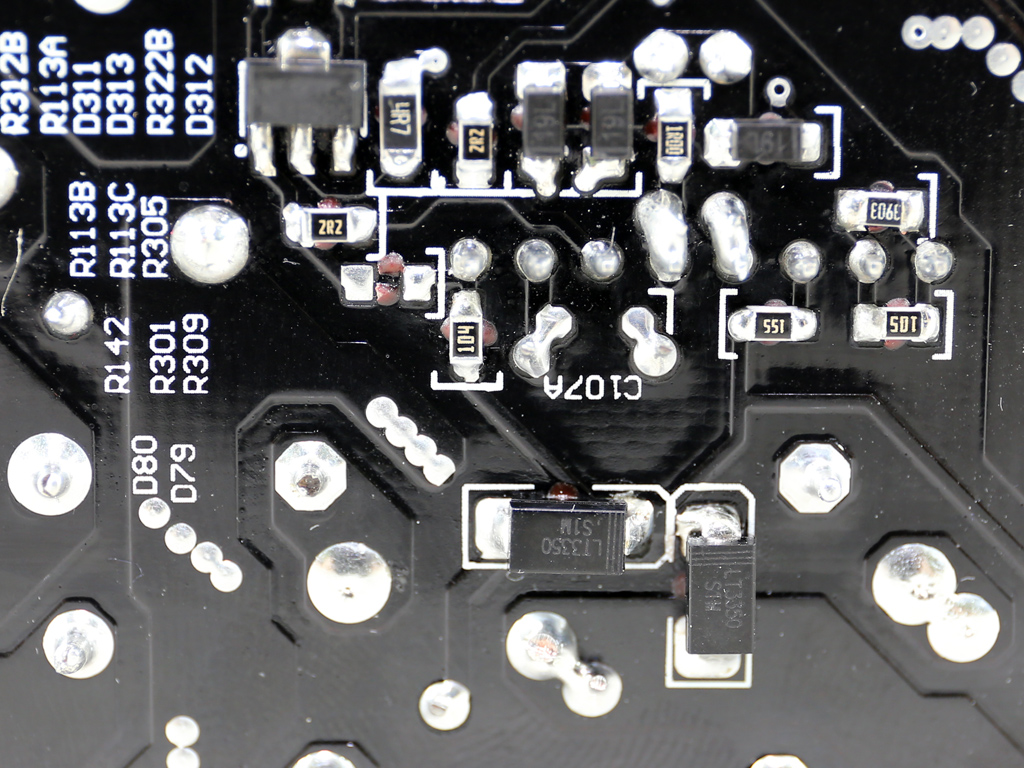
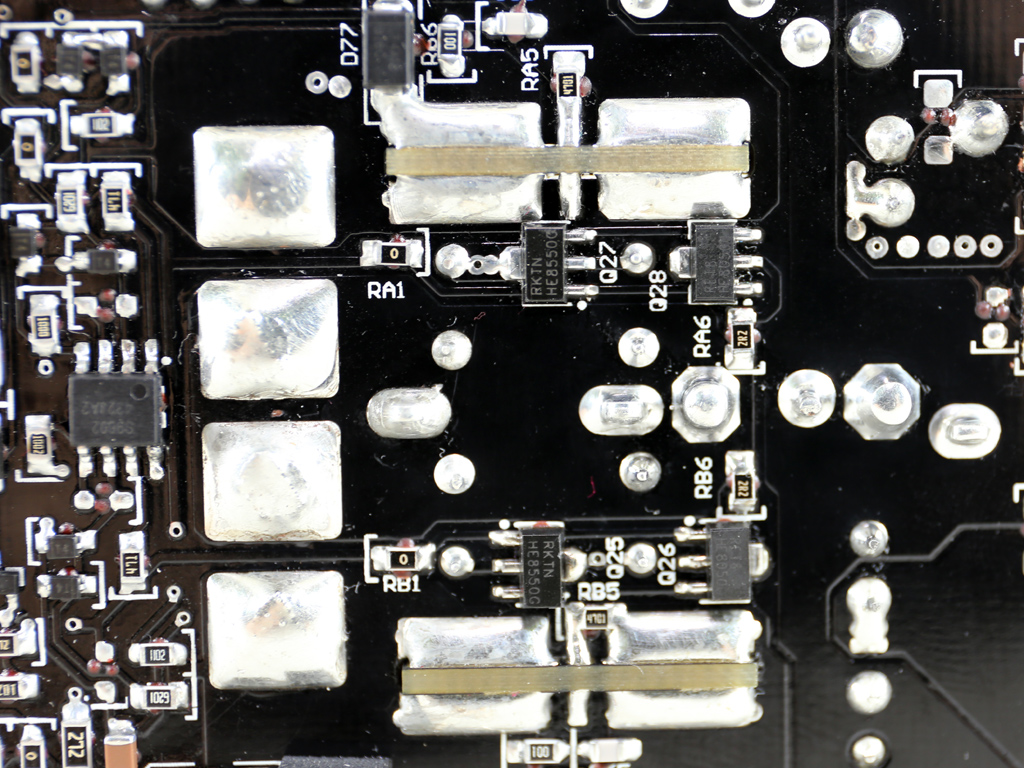
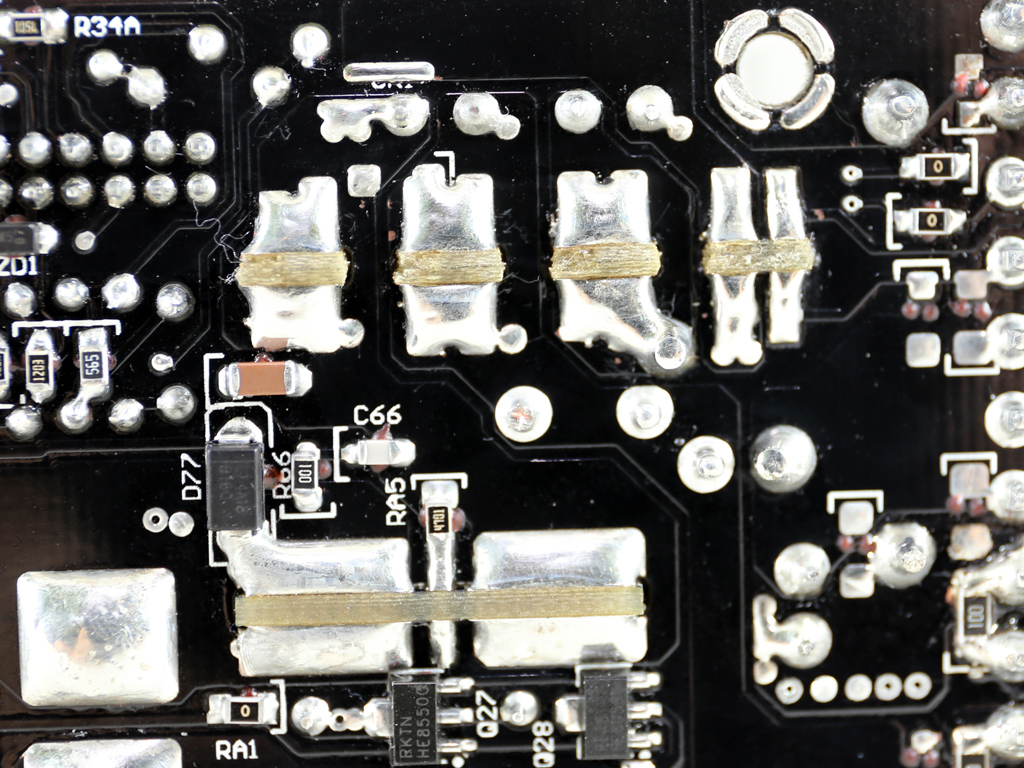
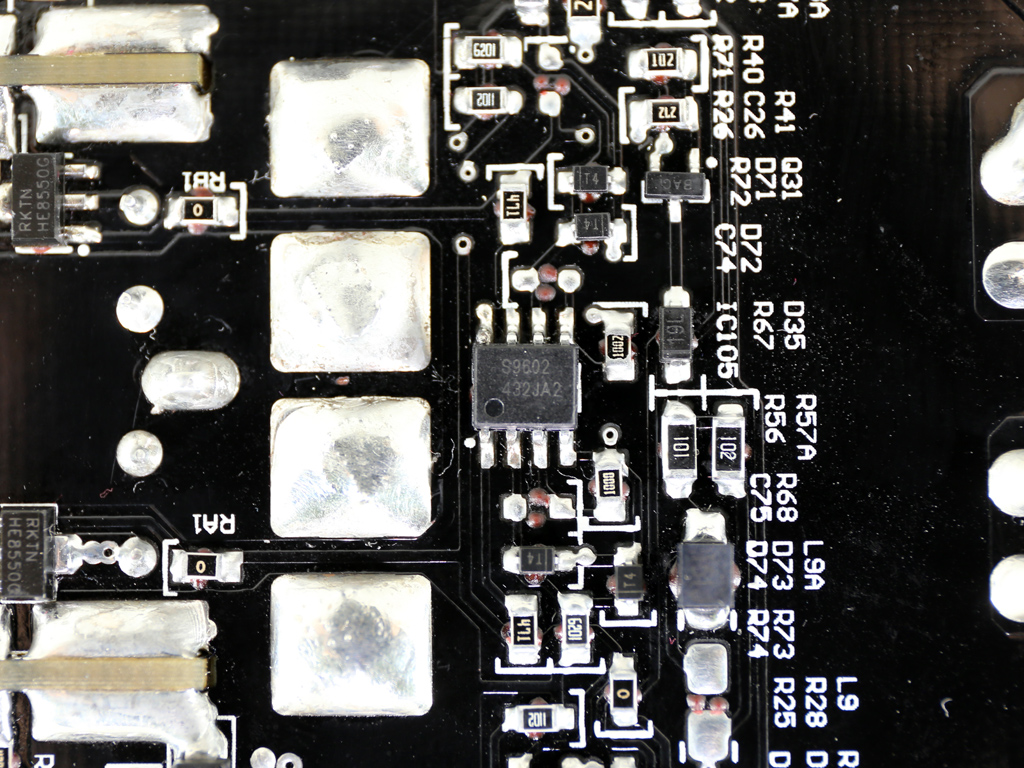
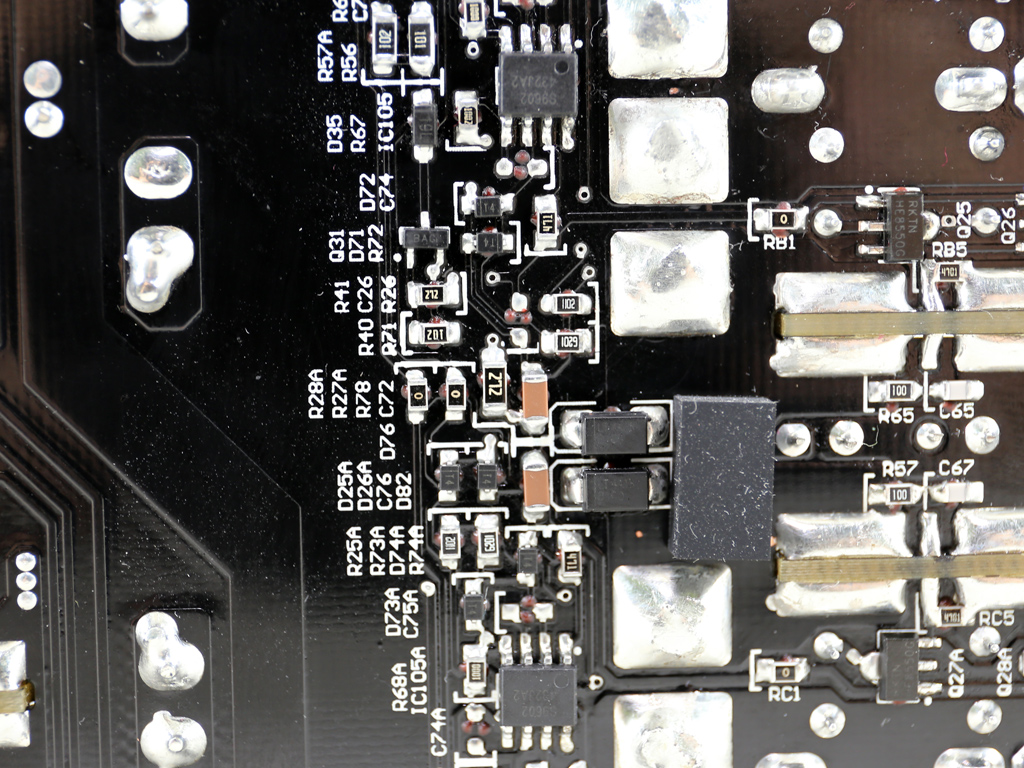
Soldering quality is very good and significantly improved compared to other Super Flower high-end platforms that we evaluated in the past.
A double-ball bearing fan by Globe Fan with model number RL4Z B1402512M (140mm, 12V, 0.3A, 1200 RPM, 92.16 CFM, 24.9 dB[A]) cools the PSU. This is a low-speed fan so we expect it to output very little noise, even under demanding conditions. With Eco mode enabled, the fan is backed up by a semi-passive mode that keeps it from spinning.
Current page: A Look Inside And Component Analysis
Prev Page Packaging, Contents, Exterior And Cabling Next Page Load Regulation, Hold-Up Time And Inrush Current
Aris Mpitziopoulos is a contributing editor at Tom's Hardware, covering PSUs.
-
turkey3_scratch Very great unit, as expected. I would have liked to see the threshold for when OTP really kicks in, if it even does. Perhaps duct taping the exhaust grill will do the trick. It's nice to see Superflower use a MOV for a change. I just wish that 3.3V rail would not get so near 3.14V during the transient response tests, but realistically I don't expect the 3.3V rail to get that sudden load these days.Reply
Also @Aris, are you sure there's only 4 y caps? I thought those blue sleeves store multiple y caps? Or do they not? -
Aris_Mp if you mean the blue components before/after the bridge rectifier, they are X caps and I didn't count them in the EMI filter on purpose.Reply -
ZeusGamer I've had the G2 model of this power supply and it's still working great after two years. I'm really impressed by EVGA with these G2 and T2 models.Reply -
JackNaylorPE Efficiency is nice... I guess .... but with that 3.3 and 5V performance, I'm not impressed.Reply -
Dark Lord of Tech 3.3 rail can vary per unit , doesn't worry me a bit. Every test model for a review can produce different results.Reply -
JackNaylorPE To each his own I guess... but for the ridiculous price of $240, I'd want better. The Corsair 860 and coolermaster V850 PSUs finish 1 and 2 and are much cheaper.Reply
The unit would fail to meet the ATX spec at 5%, and this comes in at a rather dismal 4.5 %... yes, this does vary from unit to unit (and this is a bad thing) If the unit that winds up in the hands of a review site gets two outta 3 rails at 4.5%, I shudder to think what we might get ordering off newegg. In the review graphs, it's the bottom of the chart against all the other PSUs with which its compared.
The focus on efficiency in the ranking of PSUs in an enthusiast box is a criteria which escapes me ... I never walked into a Porsche dealership where the salesman's first pitch was "this model is great, it has the best gas mileage in our entire line'. -
yyk71200 Differences in effissiency between gold, platinum, and titanium psus are rather small and do not justify price differences. Quality of output is more important criteria in choosing a psu than small differences in wattage consumed.Reply

